Basking Ridge, New Jersey’s Most Famous Incident
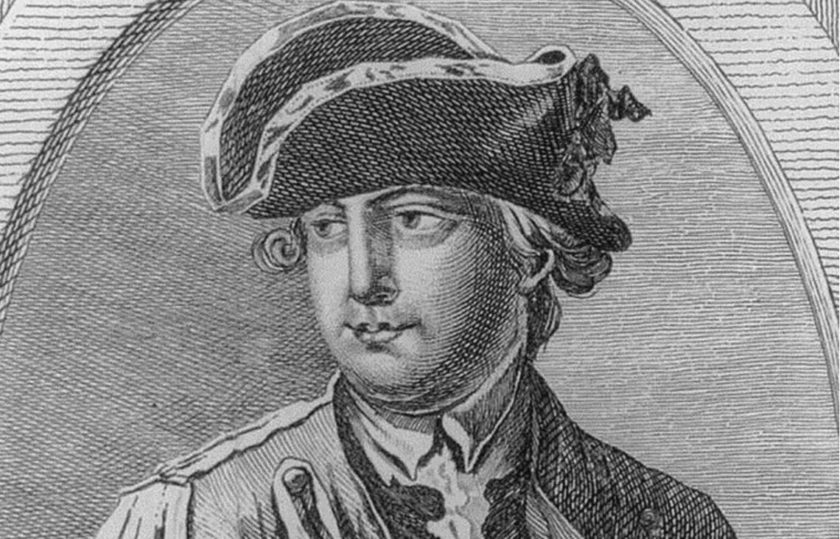
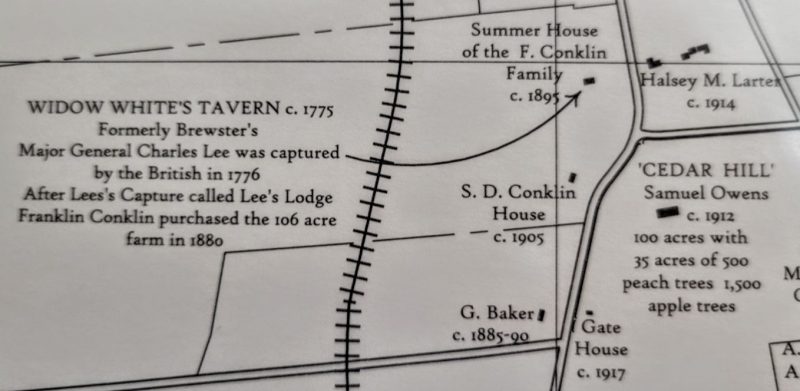
At about noon on December 13, 1776, General Charles Lee (1731-1782) was alarmed by Major Wilkinson while he was writing a letter to General Gates about George Washington in an upstairs bedroom of the Widow White’s Tavern in the quiet village of Basking Ridge, New Jersey.
Widow White’s Tavern, named after Ebenezer White’s wife Mary Brown White, became the centerpiece of Revolutionary War history on that day because it was on this most unfortunate day for General Lee that General Lee became a prisoner of the British Army, leaving General Washington in a precarious position. Who would have guessed that the Widow White’s Tavern capture might have turned into a blessing in disguise for the young Continental Army?
With Lord Cornwallis staying in Pennington to the South, he sent a patrol of 30 dragoons from the Sixteenth Regiment (Burgoyne’s Regiment of Queen’s Light Dragoons), to gain intelligence of Lee’s division. Lieutenant-Colonel Harcourt (later Earl Harcourt, F.M.), obtained intelligence that Lee was in Basking Ridge, and proceeded in that direction.
Surprising Lee’s Guard, the Tavern was surrounded. Major William Bradford, one of Lee’s aids, who was present and escaped, stated that the event unfolded by a Tory who was with General Lee the night before, complaining of a horse that was recently taken by the Army. He found where the General was to lodge and breakfast, and knew it as to be at White’s Tavern about noon. He left them, rode 18 miles South to Brunswick, and returned with Harcourt and the Dragoons.
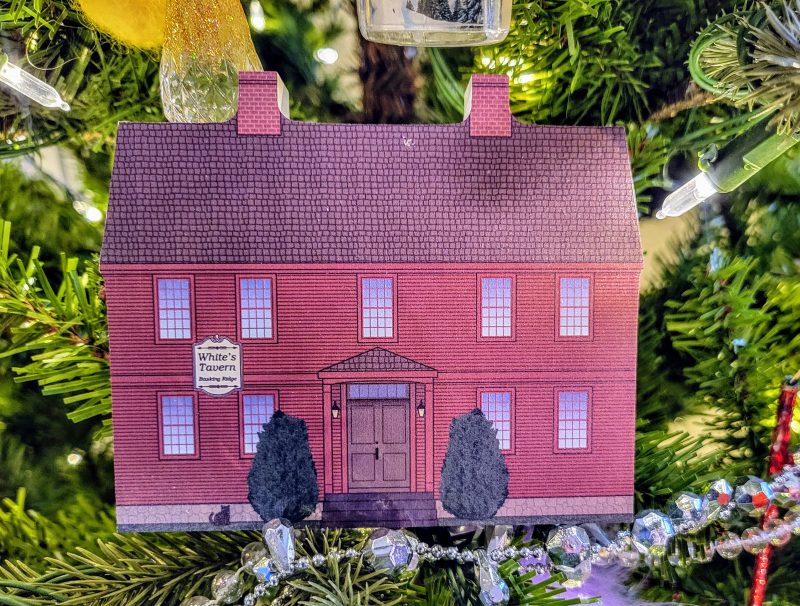
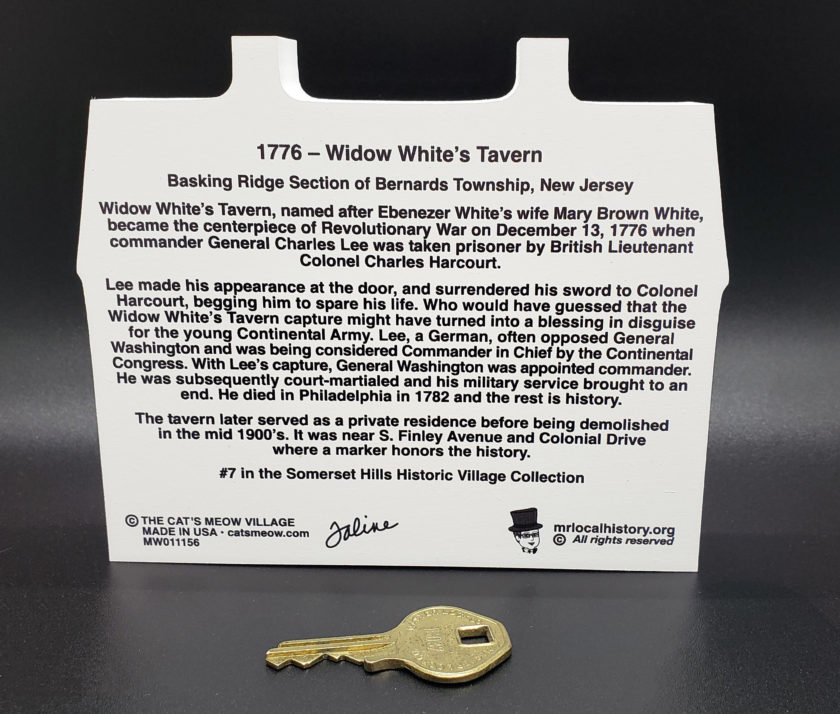
Another Account of the Event
On the other hand, the English account states that they captured a messenger, bearing a letter from General Lee, who was induced to tell where Lee was stationed. Harcourt detached Tarleton, who traveled to and charged the Tavern with six men to secure the doors (about 100 paces from the road). Harcourt immediately summoned the house, with threats to set fire to it, and put every man in it to the sword, if the General didn’t surrender. Harcourt’s light horse, however, was fired upon from the house, and two or three British were killed (one of whom was a Cornet). There were several French officers with Lee, and one of them took aim at Colonel Harcourt. General Lee’s guard had also been carelessly disposed at an out-building and the sentry at the door of the Tavern, at first mistook the dragoons for his own people. Lee’s Guard rallied as the alarm was given. They attempted to defend themselves, but they were quickly overpowered. Some were wounded, and two were killed trying to escape.
There was also a discussion regarding the valor of a French gentleman, Captain Jean Louis de Virnejoux, who noted that “had his advice been taken …probably Lee would have escaped.
Resistance was short. Finding concealment impossible, and further resistance useless, Lee made his appearance at the door, and in the most submissive manner, surrendered his sword to Colonel Harcourt, begging him to spare his life. English accounts state he fell to his knees to Harcourt in a cowardly manner. British Captain Thomas Harris, after Lord Harris, states in his journal that “Lee behaved as cowardly in this transaction as he had dishonorably in every other. After firing one or two shots from the house, he came out and
entreated our troops to spare his life.”
He was somewhat roughly handled on being seized, and his captors, if they did not treat him with great indignity, certainly displayed very little regard for his comfort or appearance. He had presented himself without his hat or outside coat, and although he earnestly requested permission to get them, he was very peremptorily refused.
He was mounted on the guide’s horse, tied on both legs and arms, and with one of his aides who was mounted behind a dragoon, he hurried away at a furious speed towards Brunswick. About three hours later, realizing no one would save him, he became sullen and dispirited. He said to his captors, admitting the weakness of the American army, and his own confidence in British strength and zeal, when roused, “The game is nearly at an end.”
More Tales
There have been conflicting rumors as to why General Lee was even at the Widow White’s Tavern. Certain writers have written that he was there perhaps to see Widow White herself, while other accounts note that he was actually invited. There are also accounts that perhaps General Lee was not even comfortable around women and might have been homosexual (George Washington’s Generals by George Athan Billias, 1964).
General Charles Lee (one of Washington’s 12 Generals) was captured by British Lieutenant Colonel Charles Harcourt and taken on Major Wilkinson’s horse to the camp of Lord Cornwallis at New Brunswick. Widow White’s Tavern’s original location was on what is now the corner of South Finley and Colonial Drive in Basking Ridge, New Jersey. Situated a hundred yards or so back from the road on a knoll that overlooks the beautiful Somerset Hills and valleys to the east, north, and west. None of the original outhouses or barns remain (1907 Mount Holly News article).
What Became of the Widow White’s Tavern
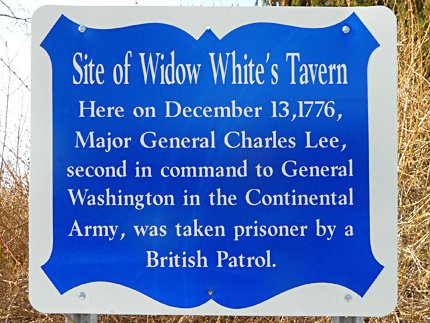
What’s in a name? Almost everything!
Here’s what’s been documented so far as far as the name goes:
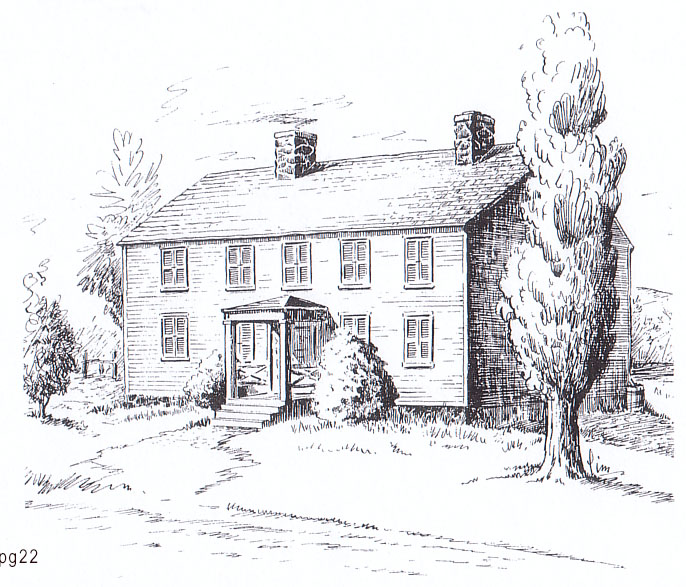
Brewster’s Tavern
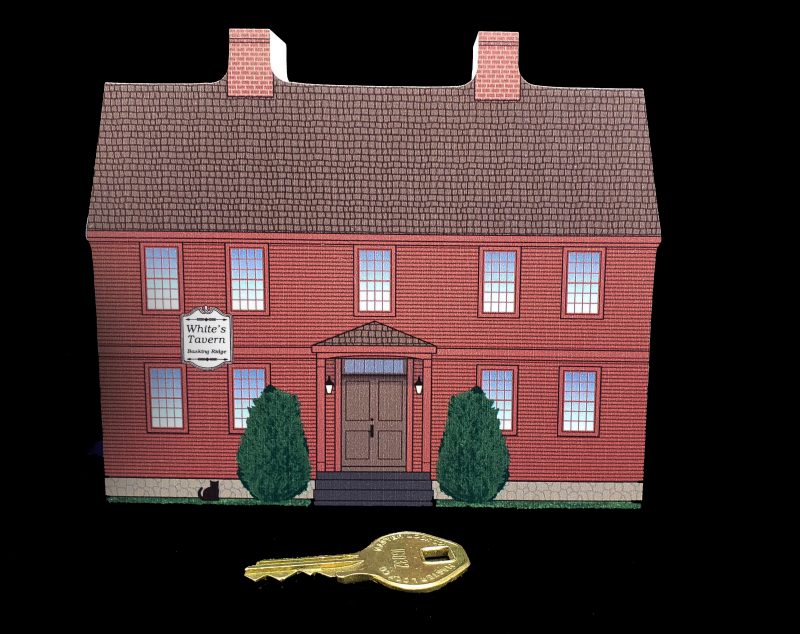
Widow White’s Tavern
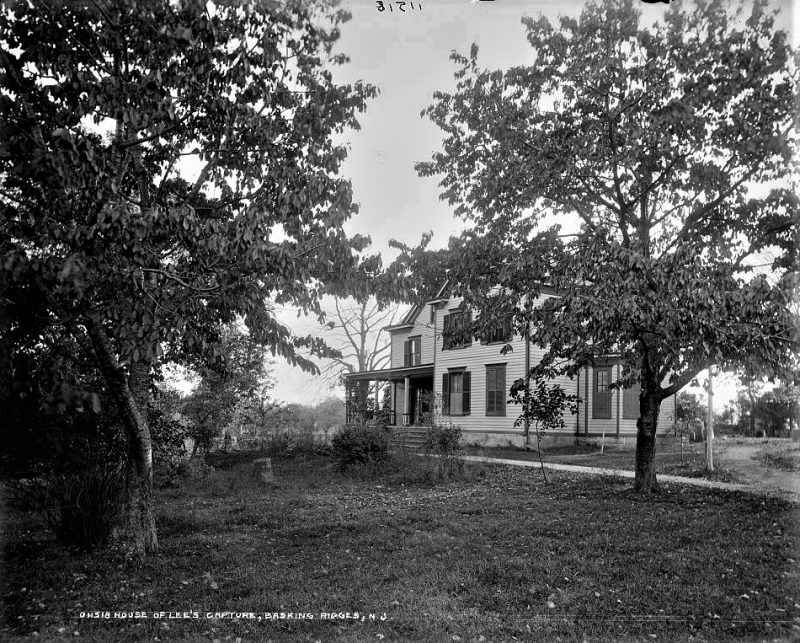
Lee Mansion
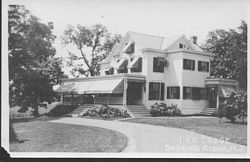
Lee Estate
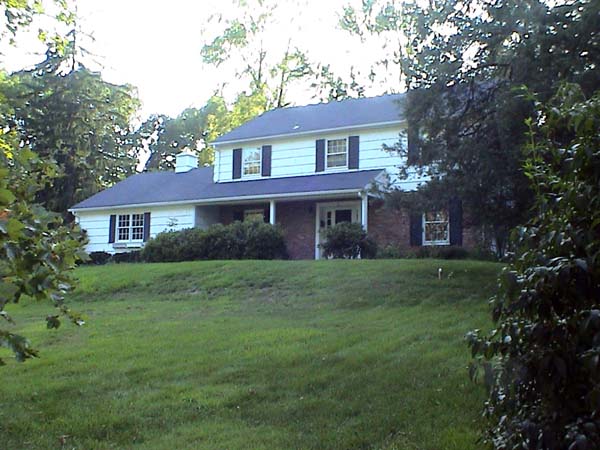
Murphy House
- Brewster’s Tavern
- White’s Tavern
- Widow White’s Tavern
- Lee Mansion (? – 1873?)
- Lee Lodge (Franklin Conklin Sr.)
- Lee House (Franklin Conklin Jr.)
- Murphy House (Built 1962- Sold 2006)
We keep Digging
The Uneven Exchange
As a captive, he gave Gen. William Howe a plan for defeating the Americans, but his treason was not discovered. Ultimately, General Lee was exchanged (May 9, 1778) back to the Continental Army for British Maj. General Richard Prescott and General Washington restored his command at Valley Forge.
At the Battle of Monmouth, he received the rebuke of General Washington and subsequently was brought up on three charges for which Lee requested a Court Martial. He lost the court martial and was officially dismissed from the Continental Army.
Presiding over the Court Martial hearings was no other than Basking Ridge’s own Major General Lord Stirling (William Alexander). He convicted and removed Lee from his position and the Army in disgrace. Lee tried to get Congress to overturn the court-martial verdict, and when this failed he resorted to open attacks on Washington’s character. Lee’s popularity plummeted. Colonel John Laurens, an aide to Washington, challenged him to a duel, in which Lee was wounded in the side. He was released from duty on January 10, 1780.
In an ensuing encounter, Lee was slightly wounded in the initial exchange of shots and only the intercession of Laurens’ second, Alexander Hamilton, prevented further engagement. Lee’s injury, however, prevented him from accepting a similar challenge from Anthony Wayne.
‘December 13, 1776 –
The General Lee Letter that he was writing to General Gates, on the morning of his capture…
My Dr. Gates: The ingenious maneuver of Fort Washington has unhinged the goodly fabrick we had been building- there never was so damned a stroke- entre nous, a certain great man is most damnably deficient. He has thrown me into a situation where I have my choices of difficulties. If I stay in this Province I risk myself and army, and if I do not stay the Province is lost forever. I have neither guard, cavalry, medicines, money, shoes, or stockings. I must act with the greatest circumspection. Tories are in my front, rear and on my flanks. The amass of the people is strangely contaminated- in sort unless something which I do not expect turns up we ar lost. Our counsels have been weak to the last degree. As to what relates to yourself in you think you can be in time to aid the General I would have you by all means go. You will at least save your army. It is said the Whigs are determined to set fire to Philadelphia. If they strike this decisive stroke the day will be our own, but unless it is done all chance of liberty in any part of the Globe is forever vanished. Adieu, my dear friend. God bless. you .Charles Lee.”
“What a lesson of caution is to be derived from this event, and how important the admonition furnished by it! What an evidence of the caprice of fortune, of the fallibility of ambitious projects, and the inscrutable ways of Heaven! The capture of General Lee was felt as a public calamity; it cast a gloom over the country, and excited general sorrow. This sympathy was honorable to the people, and due to the stranger who had embarked his fortune with theirs, and determined to share their fate, under circumstances of more than common peril. Although this misfortune deprived the country of its most experienced chief, I have ever considered the deprivation of a public blessing, ministered by the hand of Providence; for if General Lee had not abandoned caution for convenience, and taken quarters two miles from his army, on his exposed flank, he would have been safe; if a domestic traitor, who passed his quarters the same morning on private business, had not casually fallen in with Colonel Harcourt, on a reconnoitering party, the General’s quarters would not have been discovered; if my visit and the controversy with the Connecticut Light-horse had not spun out the morning unseasonably, the General would have been at his camp; if Colonel Harcourt had arrived an hour sooner, he would have found the guard under arms, and would have been repulsed, or resisted until succor could have arrived; if he had arrived half an hour later the General would have been with his corps; if the guard had paid ordinary attention to their duty, and had not abandoned their arms, the General’s quarters would have been defended; or if he had obeyed the peremptory and reiterated orders of General Washington, he would have been beyond the reach of the enemy. And shall we impute to blind chance such a chain of rare incidents? I conscientiously reply in the negative; because the combination was too intricate and perplexed for accidental causes, or the agency of man. It must have been destined.”
General Wilkinson wrote in his later memoirs
(about General Lee and the December 13th morning in Basking Ridge)
As a captive, he gave Gen. William Howe a plan to defeat the Americans, but his treason was not discovered. In the end, General Lee was exchanged (May 9, 1778) back to the Continental Army for British Maj. General Richard Prescott and General Washington restored his command at Valley Forge. At the Battle of Monmouth, he received the rebuke of General Washington and subsequently was brought up on three charges, for which Lee requested a court martial. He lost the court martial and was officially dismissed.
Presiding over the Court Martial hearings was no other than Basking Ridge’s own Major General Lord Stirling (William Alexander). He convicted and removed Lee from his position and the Army in disgrace. Lee tried to get Congress to overturn the court-martial verdict, and when this failed he resorted to open attacks on Washington’s character. Lee’s popularity plummeted. Colonel John Laurens, an aide to Washington, challenged him to a duel, in which Lee was wounded in the side. He was released from duty on January 10, 1780.
In an ensuing encounter, Lee was slightly wounded in the initial exchange of shots and only the intercession of Laurens’ second, Alexander Hamilton, prevented further engagement. Lee’s injury, however, prevented him from accepting a similar challenge from Anthony Wayne. On January 10, 1780, Lee left his Virginia estate to visit Philadelphia he was stricken with fever and died alone and friendless at a tavern on October 2, 1782.
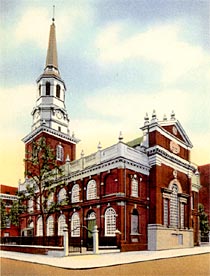
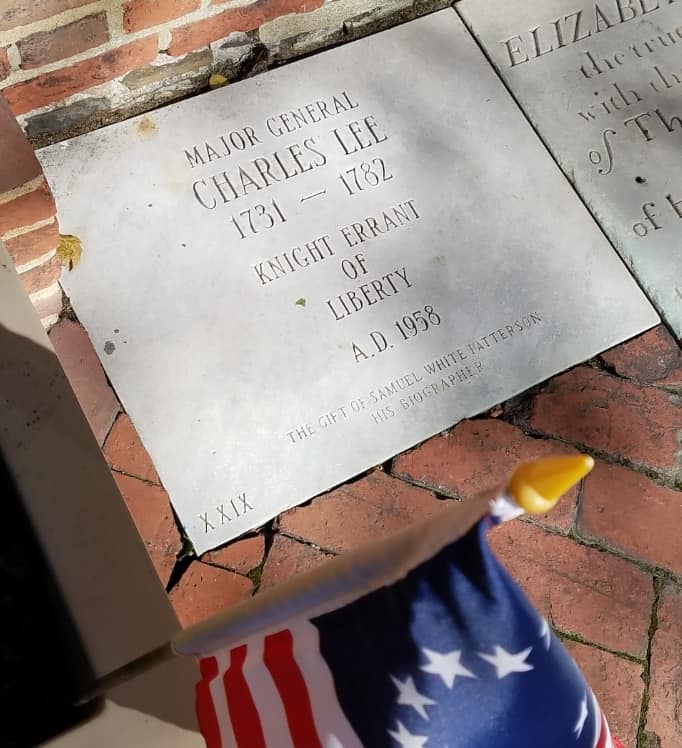
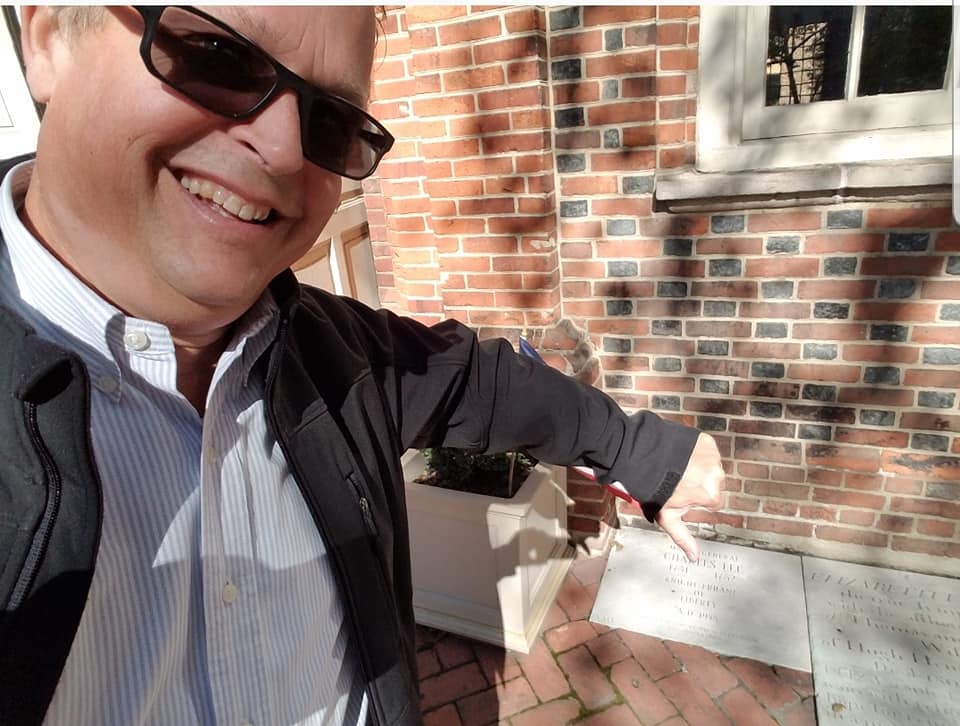
The former General Lee died a few years later on October 2, 1782, to which Lee wrote before he died in his will:
“I desire most earnestly that I may not be buried in any church yard, or within a mile of any Presbyterian or Anabaptist meeting house; for since I reside in this country I have kept so much bad company when living, that I do not choose to continue it when dead.”
General Lee prior to his death
Lee was buried, however, in the cemetery of Christ Church in Philadelphia (Arch Street and 5th Street) with the inscription “Knight Errant of Liberty” and his funeral was attended by George Washington and other dignitaries nonetheless.
Additional Notes
- If Mary were the noted innkeeper of the infamous night, she would have been 50 (Vorhees, 1935).
- That is incorrect, based on the reference below, she would have been 57.
- Whitaker Family—A Manuscript from Dartmouth College Records gives her birth year as 1719 and the names of her spouses as Samuel Brown and Edwin Whitaker.
- Jonathan Whitaker’s other daughter Elizabeth, married Stephen Ogden and lived in a house directly across the street from White’s Tavern (Rev. Oscar Vorhees Paper)
- Both Samuel Brown and Stephen Ogded died within a year of Jonathan Whitaker
- Lore has it that some of Lee’s guards were killed outside the tavern during capture and possibly buried across the street in Mary White’s sister’s yard. (See Bernardsville Times article in 1902), also stated in (Rev. Oscar Vorhees’s piece is as follows “An officer in a letter dated December 21, 1776, stated that when Colonel Harcourt approached the house with his men, they received fire from a guard that was in an outhouse, that two sentinels were killed with several others -one account says seven or eight), without any loss on our side.)
- The last that remained of Widow White’s was a fireplace, which was demolished after Conklin’s death.
- Lore has it that the actual mantle to the Widow White’s Tavern still exists today in a private residence.
- Memoirs of General James Wilkinson mention that General Lee arrived at approximately 4am at White’s Tavern on December 13, 1776 ( Rev. Oscar Voorhees a descendant of Jonathan Whitaker 1935)
- Wilkinson woke General Lee at 8am to discuss letter from Gen. Gates. and went down for breakfast about 10am.
- It was noted that General Lee was supposed to have breakfast on the morning of December 13, 1776 at John Morton’s house up the street. He never arrived. When Morton sent someone to look, that person was wounded by the British.
- 2019 – Widow White’s selected to the Somerset Hills Historic Cat’s Meow wooden collectible series.
- 2017 – Mr. Local History Project digs deeper into the Widow White’s Tavern
- Other MLH stories about Widow White’s Tavern
- The “Lee Papers 1754-1811
- General Lee’s historical timeline
- Letters between General Washington and General Lee
References
Reference People/Articles Supporting Research
Reference Books
Lee Papers – The biography of Charles Lee has not yet been properly written. Edward Langworthy edited his essays and miscellaneous papers, with an interesting biographical sketch, under the title “Memoirs of the late Charles Lee, Esq.” (London, 1792). The sketch by Jared Sparks (“American Biography,” 2d series, viii., Boston, 1846) is carefully written. Still, it has little value today, because the author knew nothing of that treasonable correspondence with the Howe’s which modifies so profoundly our view of Lee’s whole career in America. George H. Moore announced in 1860 a biography and collection of essays, with documents never before published: but this much-needed book has not yet made its appearance. Dr. Moore’s monograph cited above contains much information not easily to be found elsewhere; the portrait which stands as its frontispiece is reduced from the folio print published in London during the Revolutionary War
It’s sad to note that as of 2018, all of the people below except the Rica’s (who’ve since moved) have passed. We are grateful to have interviewed them for this research.
- June Kennedy was the head of the Fellowship of Churches and created a program combining all church members and upcoming events. She might have a file on the WWT. (Deceased)
- Priscilla Bruno (Deceased)
- John Placko- (Working) Manager for Ludolf Conklin Jr.(1950) (Deceased)
- Charlie Fortenbacker, Chief of Police- 43 Haas Rd Basking Ridge, NJ 07920-2601
- (908) 647-0745 (Deceased)
- Essay – Essays Historical and Literary, published by Macmillian in 1902. John Fiske- Title General Charles Lee, A Soldier of Fortune
- Fort Lee, on the New Jersey side of the Hudson River, across from Fort Washington, was named for him
- For Letters between General Washington and General Lee
- Virtual Bio (Good Background) of Charles Lee
- Research Timelines
- Lee Papers – The biography of Charles Lee has not yet been properly written. Edward Langworthy edited his essays and miscellaneous papers, with an interesting biographical sketch, under the title “Memoirs of the late Charles Lee, Esq.” (London, 1792). The sketch by Jared Sparks (“American Biography,” 2d series, viii., Boston, 1846) is carefully written. Still, it has little value today, because the author knew nothing of that treasonable correspondence with the Howe’s which modifies our view of Lee’s whole career in America. George H. Moore announced 1860 a biography and collection of essays, with documents never before published, but this much-needed book has not appeared. Dr. Moore’s monograph cited above contains much information not easily to be found elsewhere; the portrait which stands as its frontispiece is reduced from the folio print published in London during the Revolutionary War.
- Fort Lee, on the New Jersey side of the Hudson River, across from Fort Washington, was named for him.
How about a replica of the Widow White’s Tavern?
You can get one!
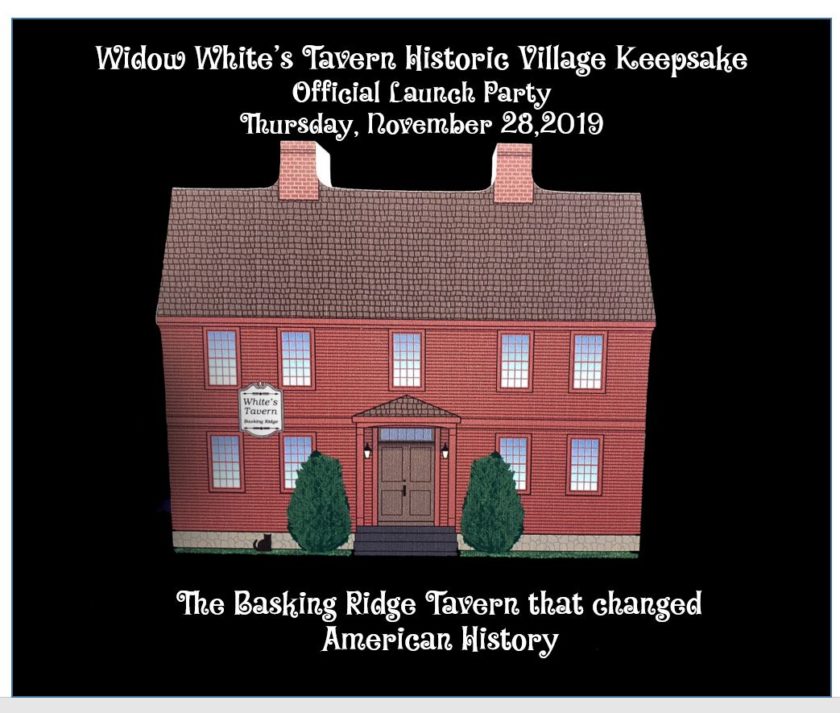
| Article: | Date | Author | Description |
| Lee Papers | 1873 | By Charles Lee, Henry Edward Bunbury | Entitled the “Lee Papers” An extract. The basis of the whole collection has been the mass of original papers left by General Lee to William Goddard, and still preserved in his family.”- |
| Amazon Books | 1860 | MOORE, George H. | MOORE, George H. Treason of Charles Lee, Major General, Second in Command in the MOORE, George H. The Treason of Charles Lee, Major General, Second in Command in the American Army of the Revolution. N.Y., 1860. 1st ed. Illus. with portrs. and folding facs. xii, 115pp. |
| 1887 | Dr William Pennington | Paper documents historical ownership of Widow Whites Tavern (Bernardsville Spinning Files) | |
| Visit Bernards Twp Library | J.H. Van Horn | Historic Somerset- Articles of the times (Bernards Historical Room 974.914) | |
| Visit Bernards Twp Library | 1907 | A funny article about the 150th anniversary noted in the Newark Call on December 12, 1913. Quotes “A night of Gaiety” and General Lee’s interest in Widow White | |
| Hard Copy (Not Scanned yet) | Feb. 18, 1933 | Oscar Voorhees | Paper- General Charles Lee and his capture at Widow White’s Tavern, Basking Ridge NJ- (Bernards Twp Library)- by Oscar M. Voorhees. Feb. 18, 1933. on file at Bernards Twp library). |
| Library of Congress Digital Version | 1889 | Andrew D.Mellick Jr. | “The Old Farm” from “The story of an Old Farm”. History of the famed Melicks of Bedminster. |
| Bernardsville News Recount of the Tavern | June 30, 1993 | Bernardsville News, W. Jacob Perry | Bernardsville News historical piece on the History of the Widow Whites Tavern, General Lee, and Franklin Conklin Jr. |
| 2001 | Star-Ledger General Lee captures a recount from 2001 with the artwork. Love the ending. (Bit of poetic license). | ||
| April 26,1905 | Bernardsville Times, | Star Ledger General Lee captures a recount from 2001 with the artwork. Love the ending. (Bit of poetic license). | |
| The scoundrel | Memoirs of General James Wilkinson | Referenced journals | |
| Dec 12, 1913 | Basking Ridge Home Reminded of General Lee’s Escapade in 1776. | 1905 Recount of General Lee Capture | |
| Widow Whites Property Survey | 1961 | Survey Document | Survey of the original area in 1961 (Known then as the Donald R and Jane H Hagner property |
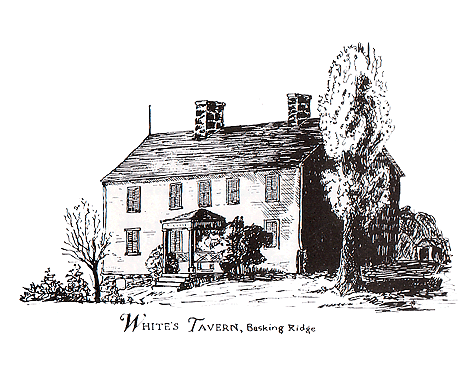

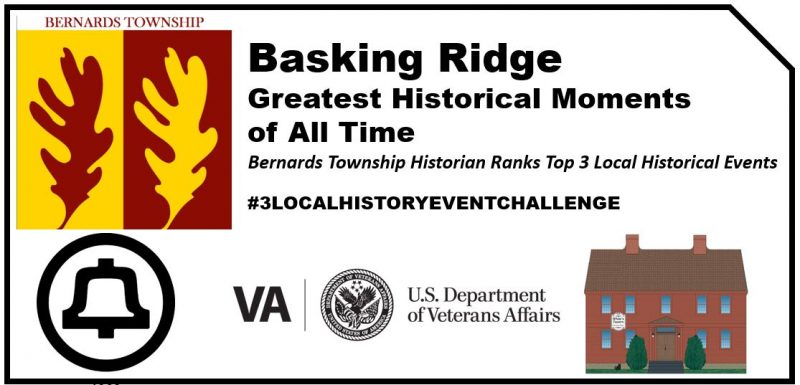
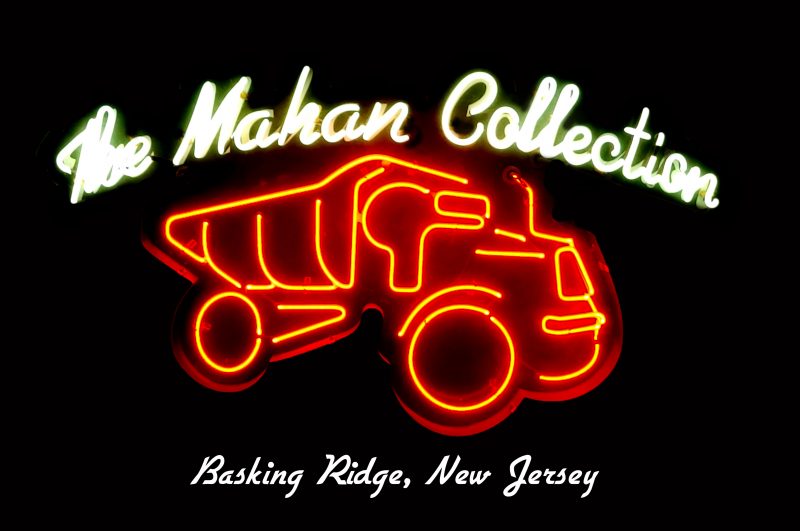
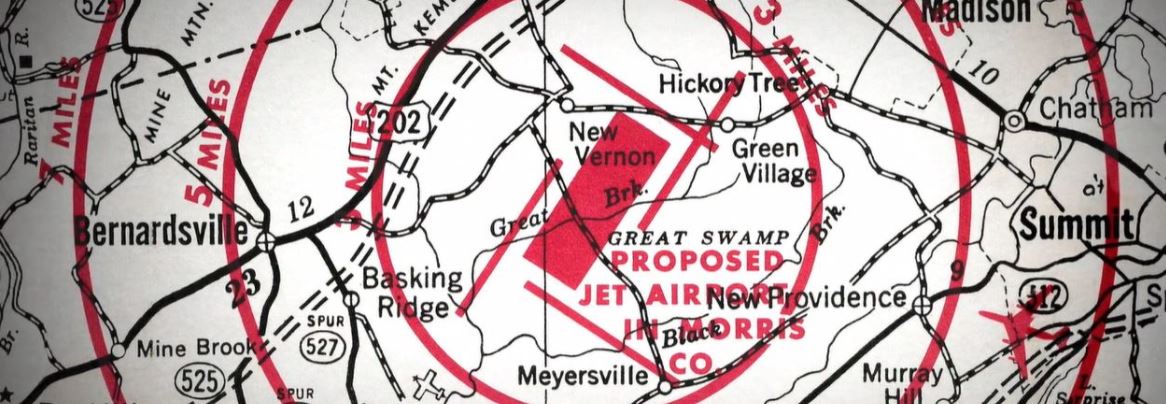
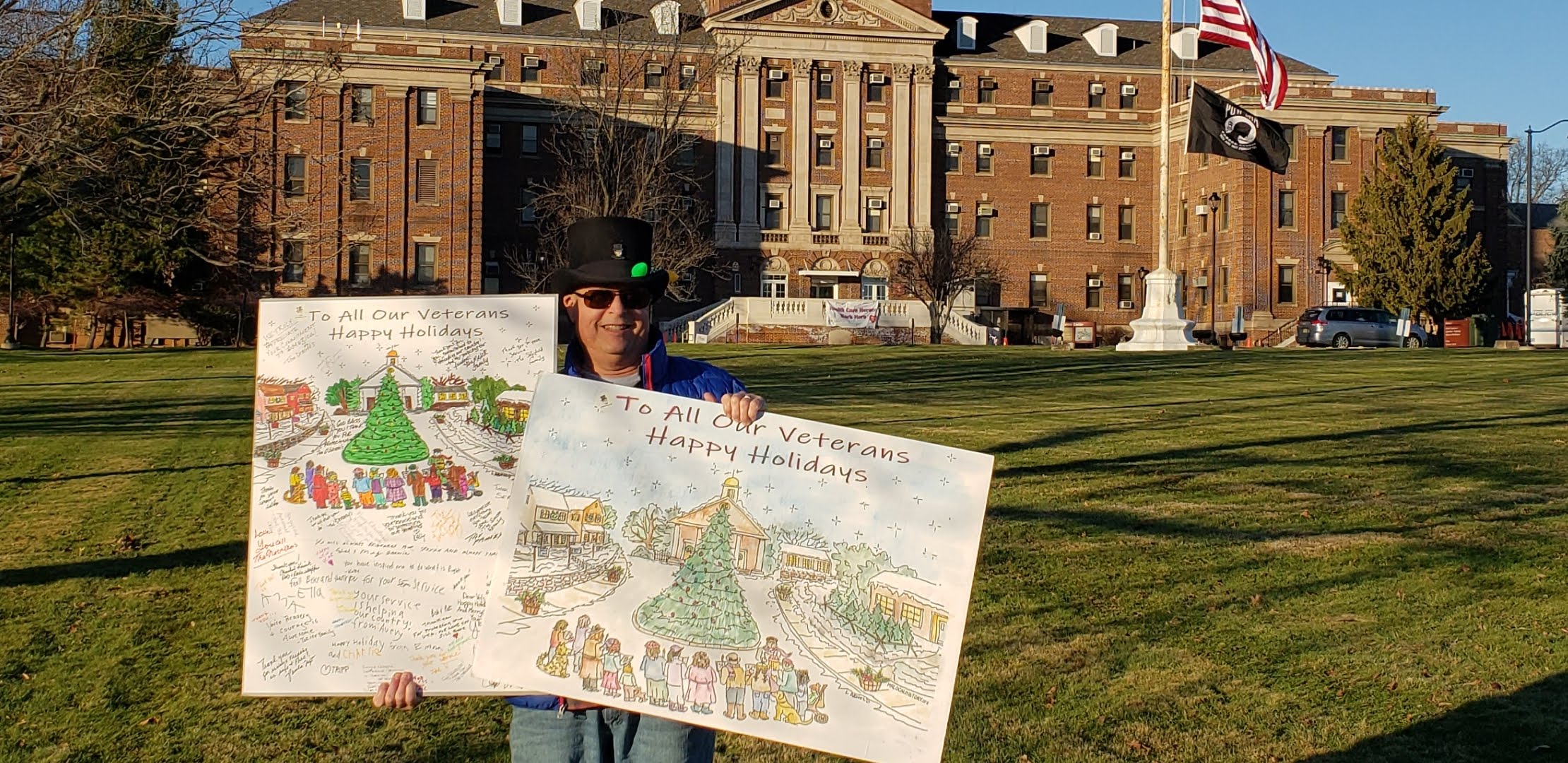
Where is Widow White buried?
You should organize a local Revolutionary War history walking tour on:
1) Widow White’s tavern
2) Presbyterian Church cemetery ( soldiers, legend of oak tree where Washington and Lafayette allegedly had a lunch
3) Revolutionary War Hospital (sign n Maple Avenue)
4) Boudinot House
5) William Alexander/Lord Stirling home location
Not to be critical but…..
isn’t that a Eagle, Globe and Anchor on Sgt William B Neill’s campaign hat?
Thanks for writing. You’re referring to the image on the right, not within the article. Sgt. Neil was posted in a book about Basking Ridge. The Neils’s are actually in Bernardsville today and have met David Neill a number of times over at MJ Neil. As to the medal, I can’t confirm.
Good morning! I’m kin to Stephen Ogden who lived across the street from the Widow White’s Tavern. I’m so curious about the soldiers who might be buried there, and I have a couple of questions for you:
1. Was Ogden’s widow, Elizabeth, still living there in 1776, when Lee was captured? Stephen Ogden died in 1768. She remarried, “2d m. Jan. 21, 1768, Samuel Roberts of Barnardstown, N. J., her dau. Elizabeth 2 -! 2 being married the same day to Dr. Oliver Barnet, of ” Barnet Hall.”
2. Has anyone investigated the burial sites of the two or more Continental soldiers who were killed when Harcourt’s light-horse arrived?
Ogden, Charles Burr; Van Alstyne, Lawrence; Wheeler, William Ogden. The Ogden family in America, Elizabethtown branch, and their English ancestry; John Ogden, the Pilgrim, and his descendants, 1640-1906 . Philadelphia, Printed for private circulation by J.B. Lippincott company. Kindle Edition.
*Stephen Ogden died in 1764.
If you are referring to Mary Brown White, the answer is YES she was there, and she even tried to advise Lee to hide at the inn. He refused. There is a very good book documenting that day called “Kidnapping the Enemy” by Christian M. McBurney. pages 45-52 specifically discuss two of Lee’s guards that were severed so badly that they could not be moved and were buried on the spot of their demise. That would seem to be on the property of the current St. James Church or thereabouts.
Actually, I was referring to her sister, Elizabeth Whitaker Ogden. She became Elizabeth Roberts in 1768. I’ve read the soldiers were buried on her property across the street from the Tavern. But I’m not sure she lived there in 1776. I’ll read the pages you’ve recommended. Thank you.
There is an excellent biography on General Lee: Renegade Revolutionary: The Life of General Charles Lee by Phillip Papas.
I am not familiar with NJ geography. I know my family played some role in its history.
Any information would be greatly appreciated.
Abraham Staats was my 6th great uncle.
Thank you for your help.
It is not my intention to further besmirch the reputation of Charles Lee, but I note that in the following link from History.com that General Charles Lee’s presence in Widow White’s Tavern is attributed to his seeking female companionship in the form of prostitution. This would, of course, besmirch the reputation of the tavern-owner, as well:
https://www.history.com/this-day-in-history/washington-orders-general-lee-to-new-jersey?cmpid=email-hist-tdih-2023-1121-11212023&om_rid=87f45d590498f184c8540ec6c3c77e32bfea14e09dade294a1d0cbbf7be3776d
Based on your knowledge, I wonder how you view this allegation? Thank you for looking into this.
That has been a suggested theory…..but there’s also a gay theory as well. And add to this that the Widow would have been way old…..why would he with her. Just sayin’
Thank you for your comments. It is tremendously unfortunate that these “suggested theories” get into print as easily as they do — especially when they reach feature status in print from an outfit like History.com. No doubt this will lead to citations in papers by history students when it really should not have seen the light of day. History.com does no one any favors by such irresponsibility, as the historical record is further muddled.